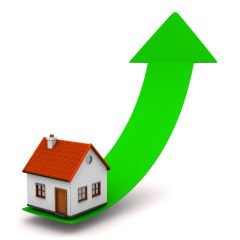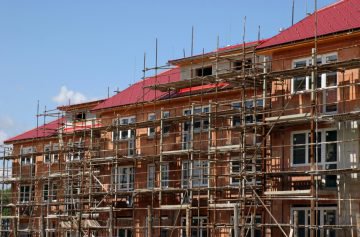Property prices up as sales fall
Property values rose again during the last month in England, Scotland and Wales, but sales were the lowest recorded during August, according to a new real estate index.
Prices increased by 0.4% in England and Wales and 0.3% in Scotland.
Regional rises
Data from a report conducted by Home.co.uk indicates that the South East remains Britain’s fastest moving regional market. A six-month rise of 6.1% was enough to outdo prices in Greater London. Year-on-year prices were up by 6.5% in the region.[1]
Asking prices for property increased in all areas of England, Scotland and Wales during the month, with the biggest rises recorded in the East of England (0.9%) and in the South East (1%).[1]
The index report says that demand and reduced supply in London and in other southern regions continues to push the national average up, albeit at a slower rate than last year. However, lack of supply is worsening, with August having the lowest number of properties entering the market for the month since the beginning of the financial crisis.
Mortgage finance availability is said to be the main force behind the extended demand. Even talk of an upcoming interest rate rises from the Bank of England has done little to put buyers off. Competition between investors is still intense in the capital and its surrounding areas, where lack of supply is felt more sharply.
Findings from the Index show that in London and the East of England, volumes of property coming onto the market are down 15% and 18% respectively year-on-year. What’s more, volumes were down by 75% and 73% in comparison with August 2008.[1]
North-South Divide
‘These and other southern regions are clearly sellers’ markets and prices remain firmly on an upward trajectory,’ said Doug Shephard, director of Home.co.uk. ‘Marketing times in the South East region have been the lowest in the country since February. Across much of the nation, marketing times are currently around the lowest we have witnessed since 2008,’ he continued.[1]
Moving on, Mr Shephard said in the north, marketing times for property are much higher than in the South and prices are not increasing appreciably. He feels that the North-South divide is one of the largest and most daunting imbalances facing the British economy.
‘Whilst the stimulus enabled property boom rages in London and the southern regions, the northern markets continue to stagnate,’ he noted. ‘Price appreciation over the last 12 months in the northern regions lay in the range -0.2% to 1.4%.’[1]
Welsh woes
Shephard went on to say that, ‘Wales too shows little or no sign of market recovery, with a rise if just 1.4% since September 2014. Looking back across the last five years, we can see clearly the dramatic polarisation that has taken place in the UK property market.’ He also stated that,’ only three regions surpassed the average growth for England and Wales, namely London, the South East and the East of England.’[1]
‘This represents a vast concentration of property wealth in and around the capital,’ he continued. ‘urther afield, there are the Midland regions and the South West where house prices have merely kept pace with inflation over the same period. Meanwhile, in the North, Wales and Scotland, the picture is truly grim. The best performer in this third tier group, Scotland, is still dismal. During five years of ultra-low interest rates, Scottish house prices have not managed to increase more than one per cent per annum. Wales, Yorkshire and the North West have all performed slightly worse over the same period. However, nominal asking prices in the North East have actually gone backwards with a fall of 0.4% over the same time.’[1]
Lack of migration
Home.co.uk also highlight evidence in its findings that suggest that recovery seen in the South of England is not moving further north. ‘On the contrary, the concentration of wealth and jobs in the South is eliciting key worker migration leaving the North deskilled. Moreover, as more job seekers gravitate to London and the surrounding areas, the housing crisis, that really only exists in this region, is exacerbated,’ Shephard explained.[1]
‘With prices in London up 53.5% and the North East down 0.4% over the last five years, it is clear that the northern and southern property markets are poles apart. We maintain that, in view of such diversity of fortunes across the country, it is near impossible to imagine how the Bank of England can realistically raise interest rates anytime soon,’ he added.[1]
‘Property markets in the North and Wales remain very fragile and would suffer significant declines should the cost of borrowing rise, causing negative equity and devastation of mortgage lenders’ balance sheets,’ Shephard concluded.[1]
[1] http://www.propertywire.com/news/europe/uk-asking-prices-sales-2015091510981.html










